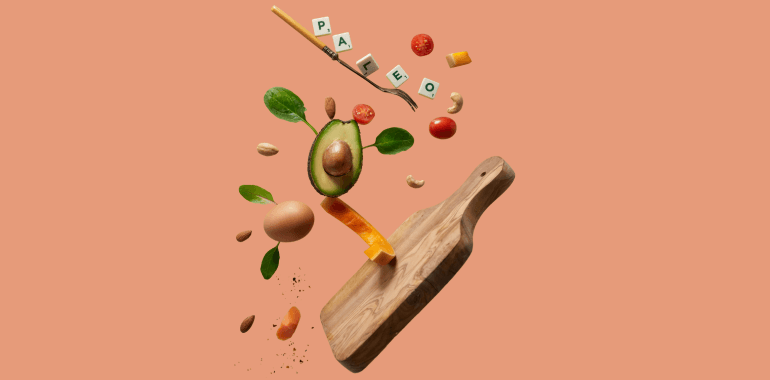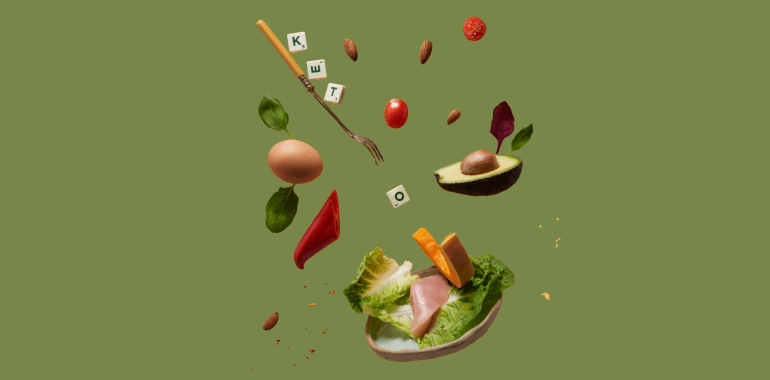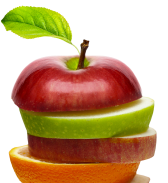Table Of Contents
The Difference Between Paleo vs. Keto?
You’ve likely heard of both the paleo and the keto diets. These diets have made the rounds on social media through mentions, hashtags, and videos. Both diets are touted as being beneficial to your health and weight loss. Both diets are also very similar, almost identical even. Discerning the two might sound tricky until you understand both diets more thoroughly.
Keep reading to learn more about the paleo diet vs. keto diet and which will work best for you.
Understanding the Paleo Diet?
The paleo diet is a method of eating that’s based on the diets of our paleolithic human ancestors. Paleo dieters believe that the foods our hunter-gatherer ancestors consumed were much more nutritious and beneficial to our health.
The paleo diet prohibits all processed foods that weren’t available to Paleo humans, such as grains, refined sugar, and most dairy.
Foods allowed on the paleo diet include:
- Meats, poultry, and fish
- Fresh vegetables (except for corn which is a grain)
- Fruits
- Fats like olive oil, avocado oil, coconut oil, lard, ghee, and tallow
- Seeds
- Nuts
- Certain natural sweeteners like honey, maple syrup, and stevia
Beverages on the paleo diet are very limited. Paleo meals can be seasoned with natural seasonings that don’t contain added ingredients like sugars. Neither coffee nor tea is permitted because they contain caffeine which was not part of the paleo-human diet. However, on less strict paleo diets, coffee and tea are fine when it has no added sugars or milk.
How strictly you decide to follow the paleo diet may depend on how closely you relate to the ideology. For some people, the paleo diet is a lifestyle. They are concerned with how our food choices impact the environment, believe in better health and well-being, and how food affects the mind-body connection.
Paleo Meaning
Who exactly were our Paleolithic ancestors? Paleolithic humans lived during the paleolithic era up until 12,000 years ago. Humans during the paleolithic era hunted animals and gathered what plant foods they could to survive.
Paleolithic humans were nomads who traveled with their food source. They sought food wherever it was found and rarely set up permanent camps. Agriculture would not be introduced until the Neolithic age much later, thus why grains are not permitted in the paleo diet.

Benefits of the Paleo Diet
The benefits of the paleo diet range from improved health to weight loss. Those who support the paleo diet claim these benefits are due to eating foods that the human body is naturally most capable of digesting. When the practice of agriculture began, what humans ate rapidly changed.
Introducing grains, dairy, and legumes into our diet outpaced our body’s ability to adapt to new foods. It’s suggested that this discrepancy could cause rising obesity and disease in modern humans.
Paleo supporters believe that modern diets do our bodies more harm than good. Instead, eating foods more compatible with our digestive system and body is preferable and may even reverse damage caused by modern diets. Paleo diet benefits may include:
- Weight loss
- Improved blood pressure control
- Improved glucose tolerance
- Controlled appetite
- Lower triglycerides
Other benefits of the paleo diet may include a more mindful approach to diet, the environment, and well-being.
Also, read – Easy Keto Breakfast Ideas to Stay In Ketosis
The Keto Diet
The keto diet is a popular diet for its proposed weight loss benefits. The basics of the keto diet are that it is a low-carb diet based on nutrition intake rather than calories. Unlike most diet plans, the keto diet allows you to eat normally “naughty” foods like cheese, heavy cream, and bacon.
To follow the keto diet, you must maintain a nutrient ratio of 70-80% fat, 10-20% protein, and 5-10% carbs. Maintaining this ratio is essential. Failing to meet these standards may mean you won’t reap the same benefits. Above all, consuming a diet of primary fats is the main rule for keto.
The Keto Diet Meaning
The keto diet is based on the bodily process known as ketosis. Ketosis is a physical state that occurs when your body has an inadequate supply of carbohydrates in your bloodstream. Because your body can no longer burn carbs for energy, it must instead burn fat. This process produces chemicals called ketones, which your body will use for energy instead of carbs.
Ketosis is typically achieved after a week or more, depending on your body type (everyone is different). For ketosis to happen, you must have very few carbs in your bloodstream. You must maintain this state of ketosis by sticking to a keto diet.

Benefits of The Keto
Ketosis can make your body more efficient at burning fat, mainly stored fat, making it a popular weight loss diet. However, most of its weight loss benefits may be due to the natural tendency to eat fewer calories on the keto diet. A diet high in fat and protein is satiating, meaning you’re less likely to overeat, thus resulting in weight loss.
Also, read – Are Eggs, Keto?
Other health benefits of the keto diet may include:
- Reduces visceral body fat
- Reduces risk of diabetes
- Can reverse insulin resistance
- Lowers triglycerides
- Reduces blood glucose levels
- Increases human growth hormone (which aids in fat loss)
The Main Difference Between Keto and Paleo
So, what is the difference between keto and paleo?
Carb Intake
Both diets are known for being low carb, which is why the paleo diet is sometimes considered an alternative to the keto diet. Both diets restrict refined carbs, but keto is much stricter on carbs than paleo. You can eat only up to 50 grams of carbs on the keto diet.
The paleo diet is not about restricting carbs but about following a healthy, minimally processed diet that is naturally lower in carbs. Fruits and some vegetables can be high in carbs and are the primary food sources on the paleo diet. Technically, however, there is no carb intake requirement.
Dairy
Dairy is almost a staple of the keto diet. Full-fat dairy products quickly help you meet your fat intake requirements on the keto diet. You can eat cheese all day long if you want. However, dairy wasn’t consumed by paleolithic humans, so it’s not included in the paleo diet.
Some dairy products like butter and ghee are okay to consume, but it’s controversial whether paleolithic humans ever finished these dairy products.
Lifestyle
The paleo diet is more so based on lifestyle rather than macronutrients. People who follow the paleo diet are usually concerned with their health, environment, sustainability, and spiritual awareness.
On the other hand, people who follow the keto diet typically practice a keto lifestyle for health or weight loss reasons. They focus on eating the right macronutrients rather than living up to an ideology.
Which Is Healthier, Paleo or Keto?
Both the paleo and keto diets can contribute to lower blood sugar and weight loss. Both diets restrict foods like refined grains and sugars linked to diseases like heart disease, diabetes, and obesity. However, paleo is slightly healthier overall.
The paleo diet is less restrictive and promotes eating various natural, whole foods that give your body essential nutrients. The keto diet allows for certain foods that are high in saturated fats. Eating too many saturated fats can increase your risk of heart disease, and you should be eaten in moderation.
Additionally, because the keto diet is so restrictive, you are more at risk of becoming nutrient deficient. Therefore, the keto diet may not be healthy to follow long term, unlike the paleo diet.
Also, read – What Is The New Diet Trends?
Paleo vs. Keto for Inflammation
Paleo vs. keto for inflammation, which one is more beneficial? While both diets help to reduce inflammation, the paleo diet may be more helpful in this regard. Studies show that the paleo diet can reduce inflammation, all-cause mortality, and autoimmune disease symptoms. These benefits are likely due to the paleo diets of nutritious staples, fruits, and vegetables.
Fruits and vegetables are high in antioxidants, which help fight oxidative stress that can lead to cancer and inflammation.
Paleo vs. Keto for Diabetes
Paleo vs. keto for diabetes? Both diets help reduce insulin and control blood sugar, but the keto diet is better for managing diabetes. The typical Western diet is comprised of 55% carbohydrates.
Eating high amounts of refined grains and sugars is associated with a 44% increased risk of obesity and a 26% increased risk of developing type 2 diabetes. The keto diet’s low carb and sugar requirements mean fewer insulin spikes, less chance of high blood sugar, less obesity, and less risk of developing diabetes.
Paleo vs. Keto Which Is Better?
So, should you try keto or paleo? Which diet will work best for you? Both paleo and keto are effective diets for improving health and reducing weight. Which diet you choose will depend on your personal preferences and health concerns. The paleo diet allows for more variety and may be easier to stick to than the keto diet.
Which diet is better depends on your needs and why you’re interested in dieting. It’s also lower in saturated fats than the keto diet, which is essential if you’re concerned about your heart health. However, the keto diet may be your best choice if you’re more concerned about your blood sugar.
William is from Canada, he is passionate nutrition & wellness writer. William understands that the topic of wellness is still not well understood, so his goal is to enlighten and teach people how to live healthier and happier in their bodies.









